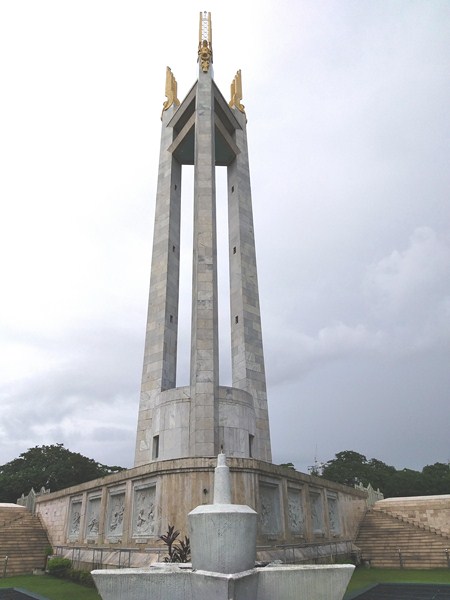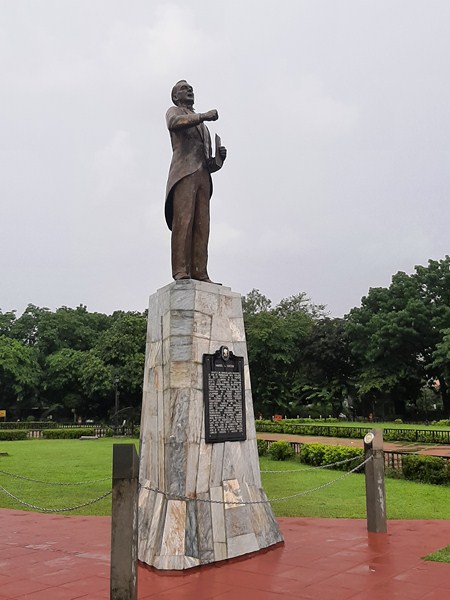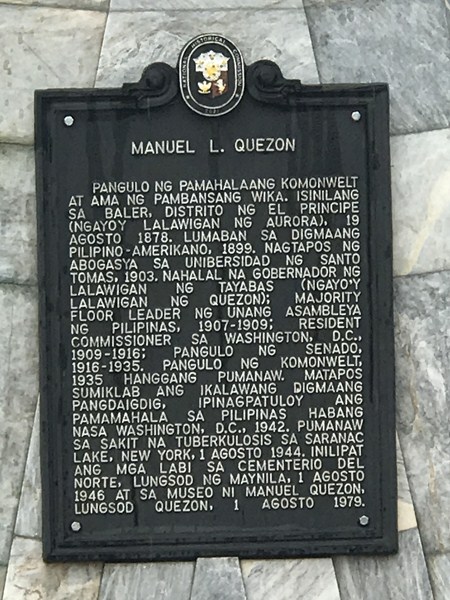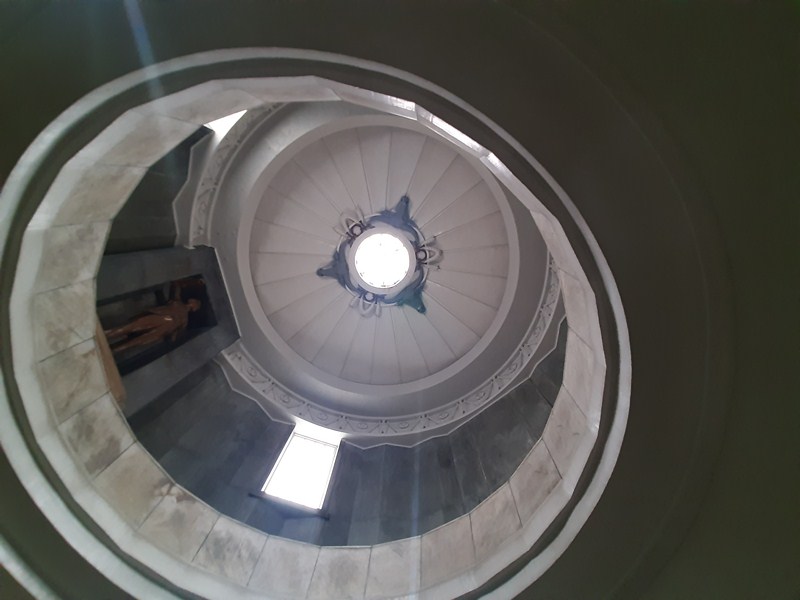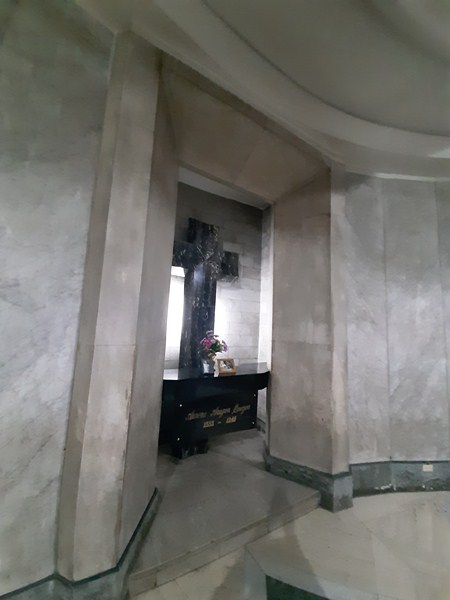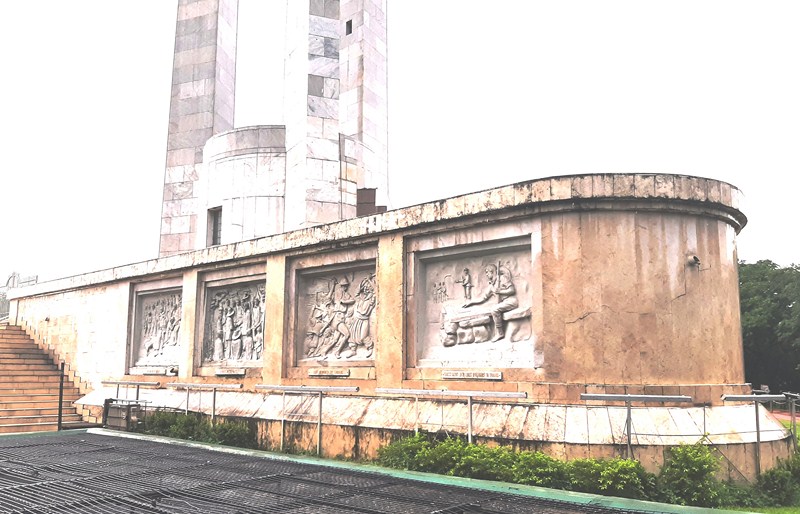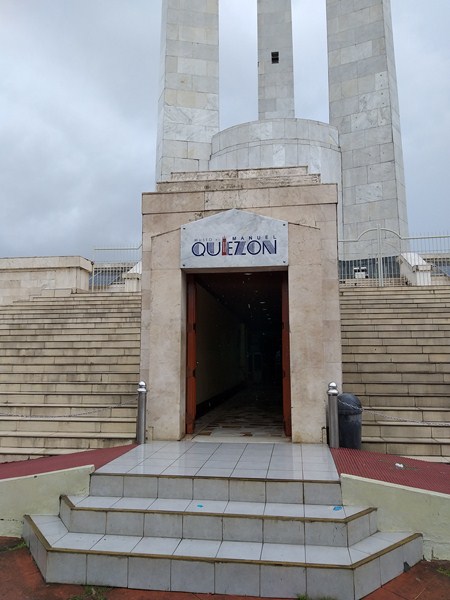The Quezon Memorial Shrine (Filipino: Pambansang Pang-alaalang Dambana ni Quezon), a triangle-shaped, Art Deco-themed monument dedicated to former Philippine President Manuel Quezon, serves as the centerpiece within the grounds of the Quezon Memorial Circle.
Check out “Quezon Memorial Shrine” and “Museo ni Manuel L. Quezon”
Here’s the historical timeline of the memorial:
- On December 17, 1945, it was established by virtue of Executive Order No. 79 signed by then-President Sergio Osmeña.
- In 1951, a national contest for the Quezon Memorial Project was held and architect Federico Ilustre‘s design won. Aside from the monument itself, also planned to be erected were a complex of three auxiliary structures (presidential library, museum, and theater) which were never built.
- In 1952, the Bureau of Public Works commenced the construction of the monument
- Between 1957 and 1958, the monument was completed
- On September 24, 1972, the monument was placed under the jurisdiction of the National Historical Institute through Presidential Decree No.1 issued by then President Ferdinand Marcos .
- On January 14, 1974, the monument was formally designated as a national shrine.
- On August 19, 1978 (the 100th anniversary of Quezon’’s birth), the memorial was inaugurated.
- On August 1, 1979, the remains of former President Manuel Quezon was transferred to a mausoleum at the foot of the monument at the Quezon Memorial Shrine from the Manila North Cemetery.
- In 1989, 31 marble bas reliefs on Philippine history and the life of Pres. Quezón, created by the father and son team of Manuel and Ron Casal, were installed around the base of the memorial.
- On April 28, 2005, the 26th anniversary of her assassination, the remains of Quezon’s wife Aurora Aragon Quezon, were likewise transferred to the shrine from the Manila North Cemetery.
- On March 12, 2020, the shrine was recognized by the National Historical Commission of the Philippines as a National Cultural Treasure (NCT)
- In December 2021, the declaration was made public.
The 66-m. (217-ft.) shrine, representing Quezon’s age when he died from tuberculosis stands, on a 36-hectare elliptical lot. Its observation deck (currently not open to the public), with a panoramic view of the city, is accessed via a spiral staircase (now an elevator) from the bottom of the structure and can accommodate 60 people at the top.
At the top of the three towering, connected pylons (covered with white Carrara marble from Italy) are The Three Muses, stone mourning winged angels (representing the three main island groups of the Philippines – Luzon, Visayas and Mindanao), sculpted by the Italian sculptor Francesco Riccardo Clementi Monti (1888-1958), with their heads bowed (as if mourning Quezon) and holding sampaguita (Jasminum sambac, the national flower) wreaths. The flower symbolizes purity and fidelity as it root words sumpa kita means “I promise you.”
The regional identity of each female angel figure could be discerned from the distinctive and traditional baro’t saya (blouse and skirt) combination they were clothed with. For of Luzon, the muse is wearing a traje de mestiza, with an embroidered pañuelo (shawl) worn over her camisa (blouse).
For the Visayas, the muse is wearing a kimona (blouse) with short “butterfly” shoulders, and an alampay (kerchief) draped over her shoulder. For Mindanao, the muse is wearing a tight fitting biyatawi (blouse) with a patadyong (skirt) wrapped over the sawal (trousers), and a kambut (sash) draped across her chest.
The three pylons would, in turn, circumscribe a drum-like, two-storey structure containing a gallery from which visitors could look down at Quezon’s catafalque (modeled after Napoleon Bonaparte’s in the Invalides), elevated on a marble plinth in the center.
Check out “L’Hotel des Invalides”
The gallery and the catafalque below are lit by an oculus (in turn reminiscent of Grant’s Tomb) surrounded by three heads of carabaos believed to have also been sculpted by Monti and mounted in 1958. The tomb of his wife First Lady Aurora Aragon Quezon is in a niche on the side of the room.
On the second level, above the circular crypt, is a 3.35 m. high statue of Quezon (originally located outside the memorial) atop a 4.26 m. high marble pedestal sculpted by the late National Artist Guillermo Tolentino and installed in 1978, depicting Quezon delivering his fiery speech when he was elected president of the Commonwealth.
Pietro “Piero” Amberti, an architect and marble mason from Torino (Italy) who had settled in the Philippines, was hired by former Quezon City Mayor Tomas Morato, to beautify the monument with Carrara marble. Morató also hired Arch. Anselmo T. Alquinto (born 1905) to design the landscaping of the park. Morato’s successors replaced the Italian marbles with locally sourced marble.
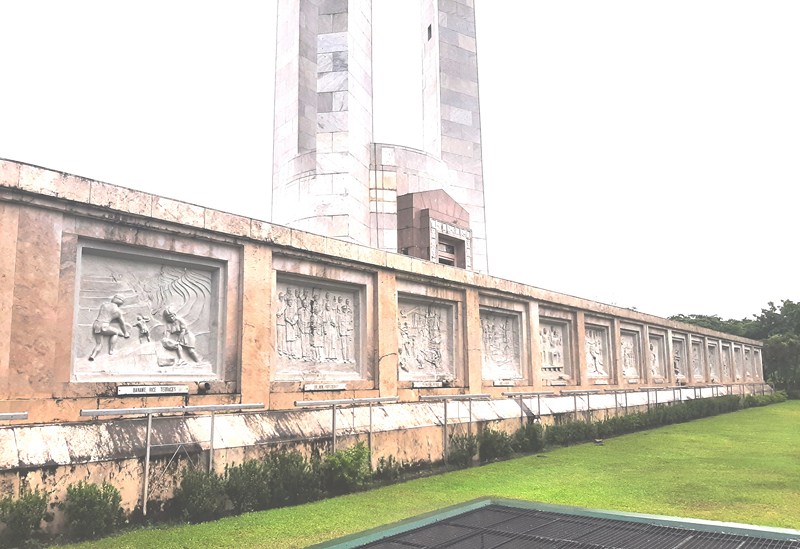
Some of the 31 marble bas reliefs on Philippine history and the life of Pres. Quezón, created by the father and son team of Manuel and Ron Casal
Installed within the Shrine itself are two small museums, one containing the presidential memorabilia of Quezon (Museo ni Manuel L. Quezon) at its base, and the other containing items on the history of Quezon City.
Check out “Museo ni Manuel L. Quezon”
Quezon Memorial Shrine: Quezon Memorial Circle, Elliptical Road, Diliman, Quezon City, Metro Manila. Coordinates: 14°39′05.1″N 121°02′57″E.

